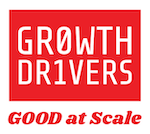Know Your Donor’s Origin Story: Unleashing the Superheroes of Your Nonprofit
Every superhero tale has an origin story—a moment that transforms an ordinary individual into someone capable of extraordinary things. For nonprofits, your donors are the heroes. They are the force driving your mission forward, and each has its own origin story—a unique journey that brought them to support your cause. Understanding this journey is critical to building lasting relationships and inspiring deeper engagement.
Just as a superhero’s power grows through their experiences, so does a donor’s connection to your organization. By unraveling their origin story—how they first encountered your nonprofit, interacted with it over the years, and what inspired them to give—you unlock the potential to cultivate them into lifelong supporters and advocates.
The Power of Knowing Your Donor’s Journey
Every donor starts somewhere. Some may have heard about your cause through a community event, a social media post, or a friend’s recommendation. A personal experience tied to your mission may have profoundly affected others. Understanding these moments of connection is critical to maintaining and growing donor relationships.
For example, The Chronicle of Philanthropy reported that at the Children’s Hospital of Philadelphia, four out of ten million-dollar donors started with gifts of $100 or less. This demonstrates how small actions, when properly nurtured, can evolve into transformative contributions. Similarly, the Stanford Social Innovation Review points out that small-dollar donors often form the foundation of planned giving at many organizations. Their contributions may seem modest initially, but their potential for impact is immense when cultivated with care.
Understanding your donor’s origin story helps you align your messaging with their values and motivations. Are they particularly interested in a specific program or initiative? Have they responded to advocacy efforts or special events? By paying attention to these cues, you can craft more personalized communications, deepen engagement, and foster stronger emotional ties to your cause.
The Role of a CRM in Tracking Donor Histories
A robust Constituent Relationship Management (CRM) system is indispensable for successfully tracking these unique journeys, but properly using your CRM is critical. A CRM not only stores donor data but also provides valuable insights into giving patterns, engagement behaviors, interests, and communication preferences. It acts as a central hub for tracking how donors interact with your organization over time, making it easier to tailor your fundraising strategies to meet their individual needs.
Consider a donor who started with a one-time $25 gift five years ago. If your CRM shows that they’ve consistently opened your newsletters containing specific topics, attended gala events instead of Peer-to-Peer events, and made additional contributions to specific appeals through social media, you have more data to engage them more personally. You can add insight to their profile by appending third-party data and wealth screening. As you explore your constituents’ journeys, you will be able to identify patterns and preferences to understand what messages move them and where/how they are most receptive to hearing those messages.
Cultivating Your Donors for Greater Support
Once you understand a donor’s journey, the next step is to cultivate them for greater support. This doesn’t mean simply asking for bigger gifts—it means deepening their connection to your mission. By showing appreciation, communicating impact, and demonstrating how their contributions are making a difference, you reinforce the value of their involvement.
The key to successful cultivation lies in recognizing that every donor is on a unique path with your organization. Some will respond to heartfelt stories and personal outreach, while others may prefer data-driven impact reports or public recognition. Understanding what motivates each donor allows you to engage them in ways that are meaningful to them, ultimately leading to increased support.
5 Actionable Takeaways
- Track First Engagements: Use your CRM to record how each donor first connected with your organization. Whether it’s through direct mail, an event, email signup, or paid media, understanding their entry point helps tailor future communication.
- Segment Donors with AI: Regularly analyze donor behaviors, such as event attendance, frequency of donations, or engagement with your content. Create segments to deliver more personalized outreach that aligns with their interests.
- Leverage Small Donors for Long-Term Giving: Don’t underestimate the potential of small-dollar donors. Develop specific nurturing campaigns for these individuals, focusing on long-term cultivation and opportunities for legacy or planned giving.
- Personalize Communications: Use data from your CRM to create personalized messages that align with your donor’s values and motivations. Whether it’s an appeal, a thank-you note, or an invitation to an exclusive event, make it meaningful and communication channel-specific based on their engagement history.
- Regularly Update Donor Profiles: Ensure that donor profiles in your CRM are consistently updated with new information, including donations, volunteer efforts, and event participation. Integrate your data & technical systems to reduce the organization’s effort to update records. This real-time data will help you stay connected and relevant to their journey.
In the world of nonprofit fundraising, donors truly are the superheroes. Their contributions, no matter how small they start, have the potential to change the world. But to unlock that potential, you need to understand their origin story. By leveraging CRM technology and a data-driven approach, you can build stronger, more personalized relationships that inspire greater giving and long-term support. Knowing where your donors come from is the first step to guiding them toward becoming the champions your mission needs.
Mike Scafidi
CTO - Partner
Mike has led organizational transformations by integrating people, marketing, data, and technology. With 25+ years in digital marketing at PepsiCo and Publicis, he brings a wealth of brand and agency experience. His nonprofit work spans the arts, healthcare, environmental, and adoption sectors. Named in the top 100 Digirati.
